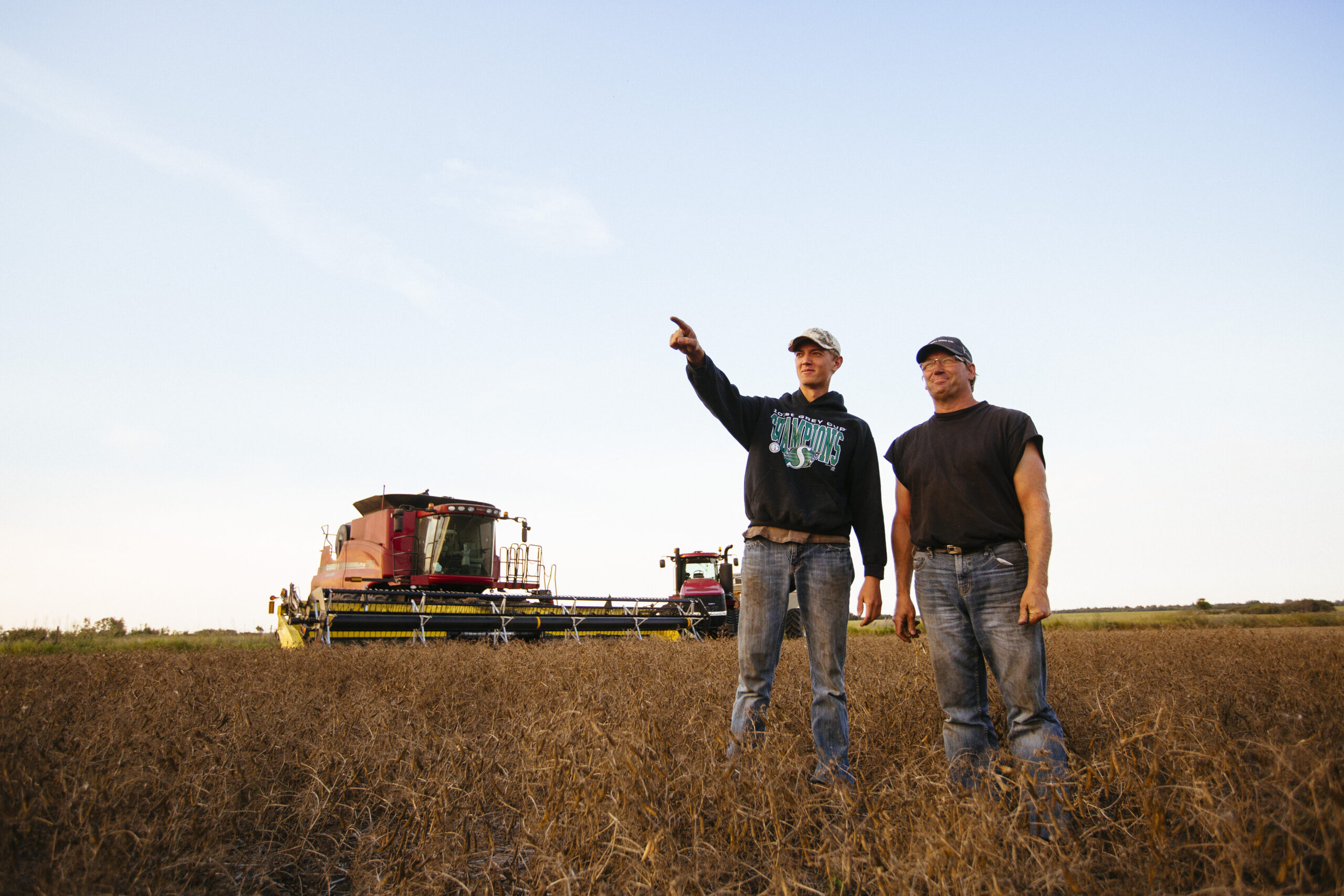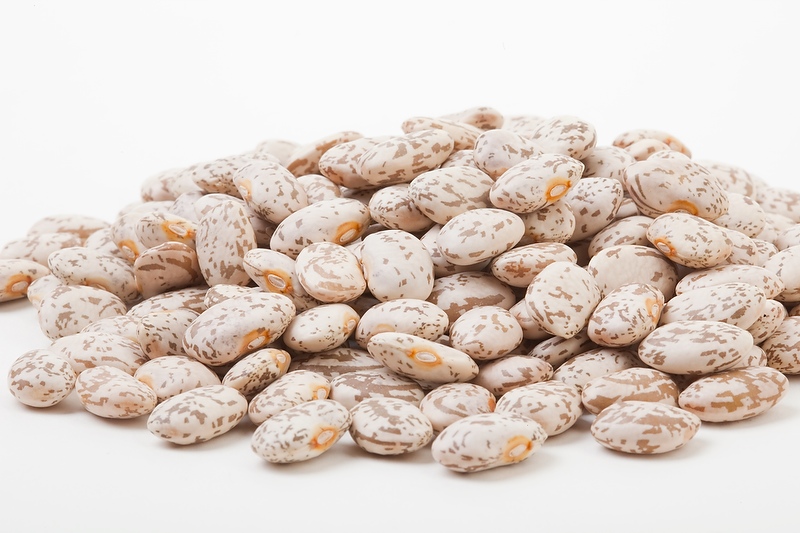Principal Investigator: Dr. Jamie Larsen
Institution: Agriculture and Agri-Food Canada, Harrow, Ont.
Prepared by: Nate Ort, M.Sc.
This project, led by Dr. Jamie Larsen of Agriculture and Agri-Food Canada (AAFC) in Harrow, Ont., screened dry bean varieties for disease resistance for white mould, root rot, common bacterial blight (CBB) and bacterial brown spot (BBS) in Southern Ontario. The results from this study add to the dry bean disease knowledge base and will provide future varieties with robust, long-lasting resistance to important diseases that limit yield and production.
Disease Surveying
Geographical and pathogen disease information obtained from disease surveys are crucial to understand the pathogens affecting dry bean production in Ontario. These efforts help researchers recognize, quantify, and assess harmful disease pathogens. In 2021, fields reported to have foliar bacterial disease symptoms were assessed, and disease and soil samples were collected. Minor success was achieved for this due to a low number of processed samples, and because of this the protocol used in 2021 has been adjusted based on external peer-reviewed research and will increase future surveying capacity.
This new protocol involves isolating bacteria from field collected samples and future collaboration between the investigators and dry bean receiving elevators in Ontario will be sought out so more samples can be collected, analyzed, and evaluated. From these future results it will be possible to observe the ratio of CBB to BBS pathogens in Ontario, which may lead to adjusting disease nursery inoculating pathogens and protocols. The investigators also note that the same CBB isolates have been used for over 20 years in their disease nurseries and it is possible these isolates are no longer the main source of CBB in Ontario fields. The newly collected disease isolates will be used in future disease nurseries.
Disease Trials
Dry bean varieties were screened for resistance to white mould, root rot, CBB, and BBS in field trials, as well as for BBS in controlled environments (growth chambers). White mould pressure was increased by spreading sclerotia bodies prior to seeding and irrigation misting was applied at critical growth stages that are prone to infection. The investigators found consistent white mould symptoms in their tested material between the location in 2021 (Harrow) and previous year’s locations. The information collected from this trial has been communicated with collaborating researchers and farmers to help with variety development.
The root rot disease nursery was initiated almost forty years ago through inoculation of several root rot pathogens and has been continuously planted to dry bean since then resulting in high and consistent root rot disease pressure. The average disease ratings across market classes followed an expected trend of white and black beans having greater resistance to root rot than kidney and cranberry beans. Furthermore, Dr. Owen Wally (AAFC, Harrow) is working towards developing an indoor root rot screening protocol to be used in future projects that will limit disease rating variability and to screen germplasm outside of the growing season. This is complementary to the disease nursery testing and will not replace screening for root rot diseases in Ontario field experiments.
The CBB and BBS field screening was done for preliminary, advanced, and registration trials, meaning the investigators tested dry bean material ranging from new genotypes that may have disease resistance to varieties that are close to commercialization. The results from these trials were consistent with previous years in which resistance to CBB and BBS was related and there are likely common resistance genes for these diseases. This was confirmed by examining the genetic background of material that was initially developed for CBB resistance. Additionally, dry bean varieties not developed in Ontario with known resistance to CBB were less resistant to CBB in Ontario than varieties that were developed in Ontario.
The researchers examined this further by developing dry bean populations from crossing varieties developed in Ontario and in the United States. Their theory is that breeding programs in Ontario screening for bacterial blight has led to new resistance disease packages specific to Ontario. The results from this have the potential to improve breeding programs by stacking resistance genes that will lead to greater and longer resistance.
Indoor screening for bacterial blight was conducted to increase the testing capacity in the investigators program. This initiative is new to this lab and therefore growth chamber settings (e.g., temperature, water supply) had to be optimized and infrastructure needed to be upgraded. Additional optimization is required for these indoor tests, however, the investigators noted there is a general relationship between disease results in their indoor and field screening tests. Now that the indoor testing protocols and infrastructure are established, the investigator’s capacity for future bacterial blight screening in a controlled environment has increased and will be used in future disease resistant screening initiatives.
Molecular Screening
Large-seeded dry bean cultivars had their DNA isolated and tested for CBB, anthracnose, and bean common mosaic virus (BCMV) resistance. This was completed on almost 600 genotypes representing most of the germplasm in advanced breeding trials in Ontario. The material tested represented all major market classes of dry bean in Ontario. Compared to previous years, the number of genetic markers assessed was expanded from three to five to understand more about the disease resistance genes in the tested material. This initiative is ongoing, and the investigators noted that further efforts must focus on increasing the number of disease resistance genes to ensure that varieties with strong, long-lasting resistance are commercially available.
New Dry Bean Varieties for Ontario
Variety development continued for all major dry bean market classes in Ontario and Eastern Canada. Over 30 crosses were completed in the spring of 2021, and more were completed in the winter of 2022. The main goal of this initiative was to target pyramiding bacterial blight and anthracnose resistance while maintaining optimal plant architecture and mid-season maturity. This testing was completed in collaboration with the University of Guelph. Nine cultivars (five navy bean and four black bean) were submitted in registration field trials and of these, two were re-entered into 2022 registration trials, which shows promise for commercialization. The investigators have reported their breeding program is making excellent progress and the breeding pipeline is full of disease resistant germplasm with good yield potential.
Key Findings
- Updated isolates found in Ontario fields will be used in future disease nurseries.
- Indoor testing capacity has increased because of optimized protocols and upgraded infrastructure.
- Dry bean varieties developed in Ontario had greater resistance to Ontario pathogens than varieties developed elsewhere.
- Promising dry bean varieties have been submitted for commercial use approval in Ontario.




